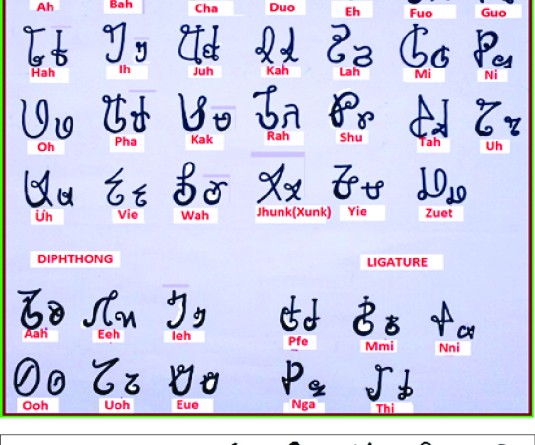
The question of NSCN anathema to Article 371(A) or Z Lohe anathema to Framework Agreement is absolutely unnecessary. The narrative is counter-productive and creates more hatred. To make fair treatment, Article 371A and Framework Agreement should be seen with deep political insight.
No person worth the Naga blood would deny that Nagas have been defending its sovereign right for more than 75 years and much blood have been shed while defending the legitimate rights based on the principle of 1929 Simon Commission, 14th August 1947 Naga independent declaration and 1951 Naga plebiscite. The NSCN under no circumstances will take the steps that are tantamount to betraying the heroic death who dearly paid with their life for the righteous cause.
The crucial question that confronted the Nagas today is, how the Article 371A of Indian Constitution resolved the Indo-Naga political issue and in what manner? The historical record of Indo-Naga political conflict denies that Article 371A has taken the Naga issue nowhere towards solving the Naga issue. If it has resolved
the Naga issue, why the GOI declared the First Indo-Naga 1964 ceasefire and go for political negotiations again or why the infamous Shillong Accord was necessary and finally, the Second Indo-Naga ceasefire of 1997 with more than 26 years of political dialogue?
Indo-Naga history is not blind to the historical fact who drafted the 16 points memorandum to which Imkongliba signed. It was craftily prepared by Indian Intelligent agency(IB) backed by a bunch of willing Naga collaborators and imposed upon a section of the Nagas that never represents the democratic voice of the Nagas.
It is a matter of exigency to understand how and why Article 371A is a roadblock to Framework Agreement.
The Framework Agreement is a political agreement and executed outside the purview of Indian constitution or Article 371A. Points to be noted in this regard:
I. The Framework Agreement recognizes the unique history and position of the Naga people.
II. In consonant with the genius of the Naga people
III. Sovereignty lies with the Naga people.
IV. Sharing sovereign power as defined in competencies.
V. New relationship.
VI. Peaceful co-existence of two entities.
No wonder, the intellectuals and scholars are saying this is the work of the invisible hand of God.
The irony is, the government of India is regretting having signed the historic FA and desperately trying to disown it now. Interestingly, the man who signed the FA started giving different interpretations quoting the phrase “the NSCN understood and appreciated the
intricacies of the Indian system”, and giving his own interpretation that NSCN has accepted the Indian constitution. NSCN considered this as something very wild and weird. Take for example, “if I say that I understood the complexity and difficulties of Z Lohe, will this be considered that I am under Z Lohe? There is another phrase, “with due appreciation of the contemporary reality”, this has been misinterpreted only referring to the Indian existing system, whereas it is a universal reference in consonant with the genius of the Naga people.
One can easily understand that 371A cannot accommodate the ingredient components of FA of Naga’s sovereign right and its national identity. The FA solution will cover all the Article 371A points and in addition realise the Naga people’s sovereign right. Until such time the Article 371A shall be kept in “status-quo” till the final inking of the Naga issue. This should not be considered as a problem for the Nagas if we are to look for honourable solution with our political identity intact.
There are enough rooms to appreciate each other difficulties and work together, provided the Article 371A be considered as “stop-gap” arrangement and a stepping stone towards the principle of greater height. But if is taken as the bedrock of Naga society, the alpha and omega of Naga political journey, then naturally it comes under “treason”. The matter is thus sensitive and requires dealing with expediency.
Unfortunately, we have witnessed organizations based on present Nagaland state under Article 371A demanding solution for Nagas of Nagaland and submitted memorandum to the Indian Prime Minister supporting the NNPGs Agreed Position. So they have created that Article 371A became a roadblock to solution.
The Naga resistance movement engulfed all the Naga people and areas. It was/is a common journey for one objective. Some people might have suffered more and some people might have suffered less. This is a natural phenomenon in political struggle. Some may sacrifice more and some less. But the common goal is the same.
Does the so called Naga People Convention (NPC) headed by stage manage president Imkongliba represent the Naga people of Assam, Arunachal, Manipur and Myanmar? This is a question that all Nagas must ponder seriously.
Any Naga National workers seeking Naga solution under the Indian constitution of Article 371A (Nagaland) or 371H (Arunachal) or 371C (Manipur) or 371B (Assam) should be considered as traitors and Indian citizens. Where is the choice? But NSCN cannot consider seeking Naga political solution under the Indian Constitution and destroy Naga national identity in the process. May God forbid such “sell out solution”.
Issued by MIP, NSCN/GPRN




